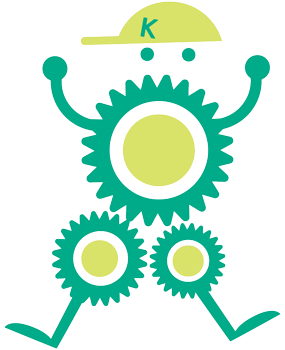Cow’s Milk- The Basics
What does cow’s milk have in it that helps your child?
- Calories,
- protein,
- fat,
- carbohydrates,
- some B vitamins (such as B12),
- phosphorous,
- potassium,
- vitamin A,
- vitamin D,
- and this is just listing a few.
It can be easy to get these nutrients from other foods. Still, milk is one of the few foods that are a source of calcium and vitamin D. These vitamins are necessary for bone development, and research shows that children who drink milk are taller than those who don’t drink milk.
It can be challenging to get enough calcium from foods other than dairy products; for example, you would need to eat 3 cups of cooked kale, or 7 cups of raw broccoli, to get the same amount of calcium as 1 cup of milk.
Milk is also fortified with vitamin D; it is a public health program that has existed for almost the past century to add vitamin D to milk to prevent rickets. So, not only is milk the primary source of calcium for children, but it is also their primary source of vitamin D from foods.
Milk Consumption
Milk is the nourishing liquid that sustains life. It was a staple in early societies because it could be consumed when water wasn’t readily available to drink and also provided some needed protein for those who didn’t have much meat or vegetables on hand.
Nowadays, we know milk’s nutritional benefits as well: Vitamin D helps our bodies absorb calcium so they can build healthy bones; Lactose provides energy through calories from sugar that come with carbohydrates like lactose (a type of natural sugar), And potassium plays an important role by controlling blood pressure levels.
Milk has been around since before recorded history; according to archaeologists, humans were drinking cow’s milk as far back as 8000 BCE!

Drinking Milk
It’s a commonly held misconception that adults need to drink milk in order to strengthen their bones.
In reality, the calcium and other minerals you would get from drinking milk will help maintain bone density to avoid broken bones or a bone fracture. If you like milk and dairy products such as cheese, yogurt, butter -eating these at least twice per day can meet your needs for essential nutrients without having any unpleasant side effects.
If milk consumption is the only dairy food in your diet, you don’t need ] more than three or more glasses of whole milk each day, don’t worry. You’re doing just fine with what is necessary for maintaining strong, healthy bones despite all those myths out there.
Lactose Intolerance
People who are lactose intolerant have difficulty digesting the sugar in milk that causes their stomach to bloat, produce gas, and cause diarrhea. The condition is not harmful, but it can be uncomfortable for people experiencing these symptoms after drinking or eating dairy products such as yogurt and cheese.
Some individuals lack an enzyme called lactase which helps break down (digest) sugars found on foods like those with cow’s milk; this leads them to experience unpleasant digestive side effects of having low levels of lactase present during the digestion process.
If you are struggling to give up dairy, there may be a solution for your lactose intolerance. Most people with the condition can manage it without cutting out all of their favorite foods and drinks from that category, including cheese, to prevent digestive issues.
Many people who have lactose intolerance believe they need to eliminate milk products if anything; however dietary guidelines are recommended. You need an enzyme supplement or something like Lactaid pills, which will help digest some amount of sugar found naturally in these food items and those containing added sugars such as high fructose corn syrup.
Milk Consumption
A study in Sweden found that drinking too much milk – three or more glasses a day – leads to an increased risk of death and leads to an increase in the chance for hip fractures and other bone-related mishaps.
There was nearly double the mortality rate for women when drinking three or more glasses of milk each day vs. those who drank less than 1 cup per day; however, men were unaffected by this correlation.
However, in the United States of America
If you don’t get enough vitamin D, calcium can do little to strengthen your bones. The good news is that most commercially-produced milk in the United States has been fortified with Vitamin D. Hence, it’s possible for people who are lactose intolerant or vegan (who may not want to consume dairy) still be able to absorb all of the necessary nutrients and provide their body with what they need!
If an 8-ounce serving of milk supplies around 30 percent of your daily vitamin D needs, three glasses per day would meet those needs.
The Balance Between Too Much and Too Little Milk
If all of this makes you think, “the more milk, the better,”- not accurate!
Despite the benefits of milk, too much milk can be a challenge. When children drink too much milk, two things happen. Firstly, milk has calories and can make you full. Second, you will notice that if your child drinks too much milk, they are less hungry for food.
The second is, the more milk that children consume, the lower the iron in their body (especially the storage form of iron, called ferritin). Did you know that in North America, the main reason kids are iron deficient is that they drink too much milk?
Drinking too Much Milk
So, this can be a tricky balance. If their milk take is too little, they may not get enough calcium and vitamin D. If they drink too much milk, they are at risk of iron deficiency anemia.
The good news is, we know the ideal balance to support both bone health and iron levels. Research shows the ideal balance between these issues is 500ml (16oz) milk per day. This is the spot that gives them enough calcium and vitamin D to stay healthy but won’t have a negative impact on their appetite or iron levels.
Cardiovascular Disease
Heart and blood vessel disease is a condition that develops when plaque builds up in the walls of arteries, narrowing them and making it harder for blood to flow through. If an artery becomes blocked by a clot, this can cause a heart attack or stroke.
One of the biggest sources of saturated fatty acids is dairy products, which are a source of calcium and fat. These fats can lead to heart problems and other health hazards.
Saturated fats have been linked with cardiovascular-related events such as coronary artery disease and stroke in adults who eat milk or consume dairy foods that contain animal fat like butter, cheese, ice cream, etc. Thus far, people should be aware of their food intake habits because even though this might seem innocent, it could eventually cause serious issues.

To Summarize:
• Milk can help provide essential nutrition to help with your child’s bone development.
• Excessive Milk Drinking appeared to cause iron deficiency anemia and leaving your child with no appetite to eat meals.
• Aim to serve no more than 500ml (approximately 16oz) milk daily; this will help provide your child enough calcium and vitamin D but won’t have a negative impact on their appetite or risk of developing iron-deficiency anemia.
Frequently Asked Questions
What About Flavored Milk, Like Chocolate Milk?
When offering milk, plain (unflavored) milk should be the choice you serve daily. Flavored milk (like chocolate and strawberry milk) should only be less than one glass offered on occasion. The additional sugar in flavored milk is not optimal for their health or their teeth.
What About Non-Dairy Milk, Like Soy Milk or Almond Milk?
The situation is slightly different with goat milk or non-dairy milk such as soy milk or almond milk. If you have questions about other types of milk, speak with your doctor, nurse practitioner, or dietitian.
Should I be Worried About the Amount of Sodium in Milk?
Milk naturally has salt, but a minimal amount that shouldn’t be a concern.
Do I Still Need to Give my Child a Vitamin D Supplement, Even if They Drink Milk?
For some children, yes! It depends on how much your child’s milk intake is.
What Type of Milk, and How Much Sun Your Child Gets Based on Where You Live and What Season it is.
It would be best if you spoke to your doctor to help make that decision.
![]()





































